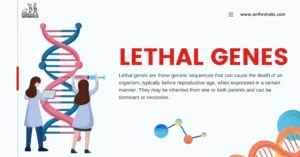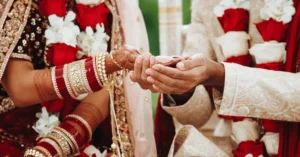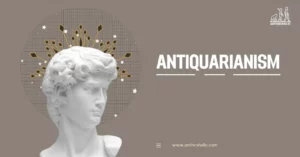AI Answer Evaluation Platform Live Now. Try Free Answer Evaluation Now
Descent and Alliance
Descent and alliance remain vital constructs in the anthropological study of human societies, providing key insights into our understanding of kinship, family structures, and social relationships. They serve as the foundational pillars of societal organization, demonstrating how individuals, families, and larger social groups interconnect, negotiate power dynamics, and perpetuate cultural traditions [1].

Understanding Anthropology’s Role
Anthropology, with its emphasis on cross-cultural comparison and deep contextual understanding, plays a critical role in uncovering and interpreting the complexities of descent and alliance systems. It assists in decoding the underpinnings of societal relationships and structures, thereby informing our understanding of human behaviors, traditions, and cultural identities [2].
Theoretical Background
Historical Overview of Descent and Alliance Theories
The theories of descent and alliance have evolved significantly since their inception in the early days of anthropological thought. Early 20th-century anthropologists, influenced by the seminal works of Lewis Henry Morgan and Edward Tylor, focused predominantly on unilineal descent, emphasizing either the paternal or maternal line in determining kinship and inheritance [3,4]
However, the mid-20th century heralded a shift in kinship studies with the introduction of alliance theory, led by French anthropologist Claude Lévi-Strauss. Lévi-Strauss posited that kinship systems, particularly marriage rules and practices, were not just about tracing descent but also about forging alliances between different kin groups [5].
Noteworthy Anthropologists and Their Contributions
Several anthropologists have made substantial contributions to the theories of descent and alliance. Bronislaw Malinowski’s work on the Trobriand Islanders offered a fresh perspective on matrilineal descent systems and their importance in societal structure and functioning [6]. Similarly, A.R. Radcliffe-Brown’s structural-functional approach emphasized the role of descent groups in maintaining societal order and stability [7].
In the realm of alliance theory, apart from Lévi-Strauss, Edmund Leach’s work on the Kachin of Burma highlighted the fluidity and flexibility of descent and alliance systems, demonstrating how societies could switch between matrilineal and patrilineal systems based on marital strategies [8].
Descent Systems: The Bloodline Connections
Unilineal Descent: Patrilineal and Matrilineal Systems
- Unilineal descent, where descent is traced through a single line, dominates many societies.
- Patrilineal descent, traced through the male line, is more common and structures inheritance, succession, and social obligations along the father’s lineage.
- Matrilineal descent, less common yet significant, traces lineage through the female line, as seen in societies like the Trobriand Islanders and the Minangkabau of Indonesia.
Ambilineal Descent: The Flexible Lineage
- Ambilineal descent permits individuals to align themselves with either their mother’s or father’s lineage depending on a range of factors, including wealth, prestige, and personal choice.
- This flexible lineage system has been documented in societies like the Maori of New Zealand and the Polynesians of Hawaii.
Double Descent: A Complex Fabric of Inheritance
- Double descent systems recognize both paternal and maternal lines for different aspects of inheritance and societal roles, offering a complex fabric of inheritance.
- These systems are seen among groups like the Yako̱̣b in Nigeria and the Herero in Namibia.
Cognatic Descent: Gender-Neutral Affiliations
- Cognatic descent is a non-unilineal system where individuals can claim membership to a group through either maternal or paternal descent.
- This system, seen in many Southeast Asian societies, gives equal weightage to both male and female lines in determining kin affiliations.
Alliance Theory: Marriage as a Social Contract
Exogamy and Endogamy: An Examination of Marital Rules
- Exogamy dictates marriage outside one’s social group, thereby creating wider networks of alliances and enhancing social cohesion, seen in many tribal societies.
- Conversely, endogamy encourages marriages within a certain group to preserve cultural continuity, wealth, and power, as in the case of royal families and some castes in India.
The Concept of Bridewealth and Dowry
- Bridewealth and dowry are integral to many marital alliances.
- Bridewealth, a payment from the groom or his family to the bride’s family, is seen as a form of compensation for the loss of her labor and fertility.
- Dowry, often a transfer of wealth from the bride’s family to the groom or the couple, may serve various functions including a form of pre-mortem inheritance for daughters, as observed in many South Asian societies.
Levirate and Sororate Marriages: Maintaining Alliances
- Levirate and sororate marriages are practices designed to preserve social alliances even in the face of death.
- Levirate, where a man marries his deceased brother’s widow, and sororate, where a man marries his deceased wife’s sister, ensure that alliances forged through marriage continue.
Cross-Cousin and Parallel Cousin Marriages: Affinal Kinship Dynamics
- In some societies, marital rules endorse cross-cousin marriages (marrying a mother’s brother’s daughter or father’s sister’s daughter) but prohibit parallel cousin marriages (marrying a father’s brother’s daughter or mother’s sister’s daughter).
- This practice maintains alliances and reinforces social bonds between different descent lines.
Intersection of Descent and Alliance: A Symbiotic Relationship
The Role of Marriage in Descent Groups
Marriage plays a vital role in the formation, continuity, and dynamics of descent groups. It is a mechanism for transmitting property, status, and roles, serving to validate relationships within and between kin groups. Moreover, through marriage, alliances are forged, fostering social cooperation, mitigating conflicts, and increasing the complexity and integration of societies.
How Descent Influences Alliances
Descent rules significantly shape the nature and scope of alliances. Societies with unilineal descent, for instance, often follow rules of exogamy, marrying outside the lineage or clan to create broader alliances and avoid inbreeding. Conversely, in cognatic societies, marriage alliances may be more flexible, reflecting the fluidity and inclusiveness of these descent systems.
Case Studies: Exploring Descent and Alliance in Different Cultures
- The Yanomami of the Amazon basin provide an illustrative example of the intersection of descent and alliance. Here, bilateral cross-cousin marriages forge strong intergroup alliances, thereby promoting peace and social stability in a traditionally confrontational society.
- Among the Trobriand Islanders, matrilineal descent is paramount, with status and property transmitted through the female line. However, marriage is a key institution, establishing crucial alliances between different matrilineal clans, thereby enhancing social solidarity and managing potential conflicts.
- In the patriarchal Pashtun society of Afghanistan, patrilineal descent dictates the formation of lineages and clans. Simultaneously, preferential cousin marriages are practiced, serving to keep property within the patriline and fortify alliances within the broader tribal network.
Conclusion
The study of descent and alliance within the field of anthropology provides a multifaceted understanding of human societies. These concepts serve as the lifeblood of kinship systems, determining how individuals, families, and social groups relate to each other, inherit property, gain social status, and even select marital partners.
In conclusion, an anthropological understanding of descent and alliance paints a dynamic and nuanced portrait of human societies. These interrelated concepts shed light on the intricate network of relationships that bind societies together, offering a deeper insight into our shared human experience. While the forms of descent and alliances may vary across cultures and change over time, their fundamental importance in shaping social relationships and human behavior remains a constant.
Suggested Articles
| What is Descent? | Principles & Types | Bilateral Descent |
| Matrilineal Descent | Patrilineal Descent | Ambilineal Descent |
| Double Descent | Descent Groups | Unilineal Descent |
References
[1] Keesing, R. M. (1997). Cultural Anthropology: A Contemporary Perspective (3rd ed.). Harcourt Brace College Publishers. https://archive.org/details/culturalanthropo0000kees_v3x7
[2] Peacock, J. L. (2001). The Anthropological Lens: Harsh Light, Soft Focus (3rd ed.). Cambridge University Press.
[3] Morgan, L. H. (1871). Systems of Consanguinity and Affinity of the Human Family. University of Nebraska Press.
[4] Tylor, E. B. (1889). On a Method of Investigating the Development of Institutions; Applied to Laws of Marriage and Descent. Journal of the Royal Anthropological Institute.
[5] Lévi-Strauss, C. (1969). The Elementary Structures of Kinship (Revised ed.). Beacon Press.
[6] Malinowski, B. (1929). The Sexual Life of Savages in North-Western Melanesia. Halcyon House.
[7] Radcliffe-Brown, A. R. (1952). Structure and Function in Primitive Society: Essays and Addresses. Cohen & West Ltd.
[8] Leach, E. R. (1954). Political Systems of Highland Burma: A Study of Kachin Social Structure. London School of Economics Monographs on Social Anthropology. https://monoskop.org/images/3/3f/Leach_Edmund_Political_Systems_of_Highland_Burma_1970.pdf




